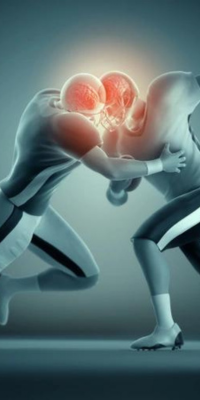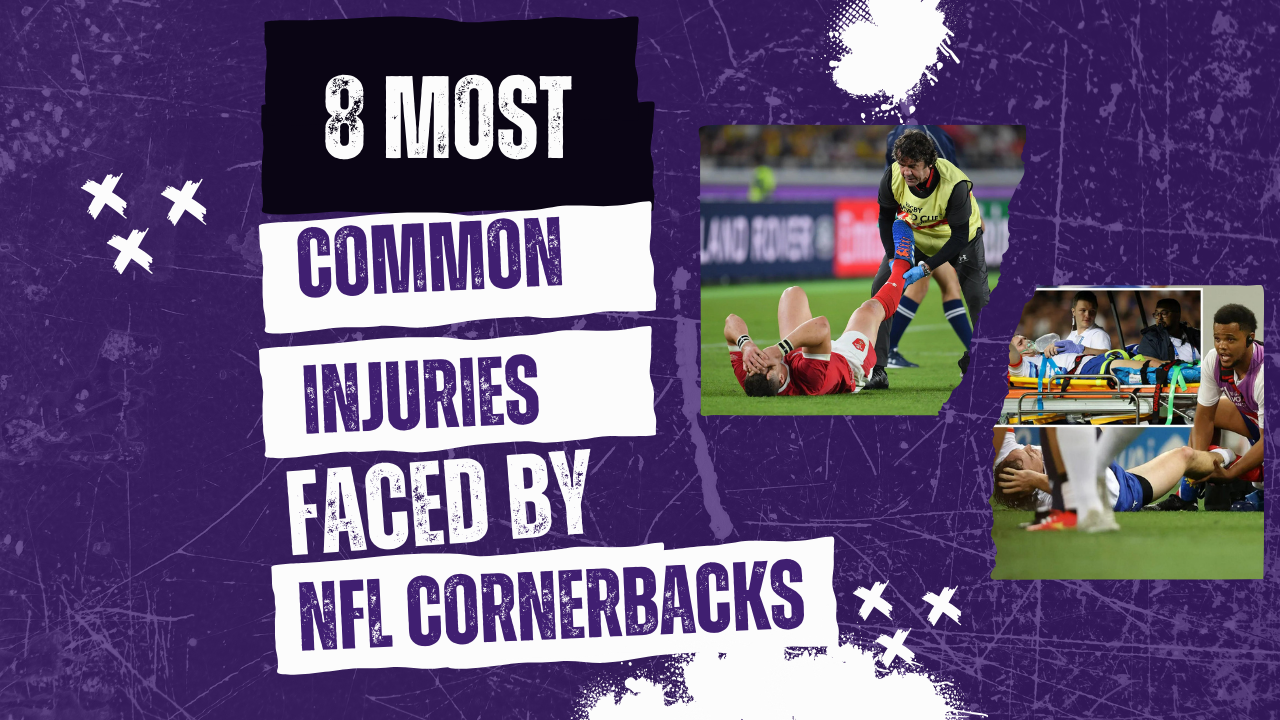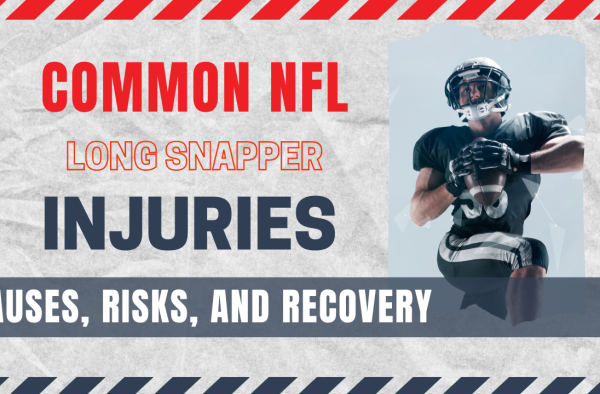In the fast-paced world of the NFL, cornerbacks are the guardians of the defense, tasked with shutting down some of the most explosive players on the field. These athletes need to be fast, agile, and smart, making split-second decisions while keeping up with elite wide receivers. But with the immense physical demands of the position comes a high risk of injury. Let’s take a closer look at eight of the most common injuries that cornerbacks face, and what makes these injuries so prevalent in their line of work.
Hamstring Strains
Hamstring strains are the bane of any speed-dependent athlete, and cornerbacks are no exception. These injuries occur when the muscles at the back of the thigh are overstretched or torn, usually during high-speed sprints or sudden changes in direction—something cornerbacks do on nearly every play.
The problem with hamstring injuries is that they tend to linger. A cornerback who pushes to get back on the field too soon risks re-injury, leading to a vicious cycle that can derail a season. Even after healing, the fear of re-injury can affect a player’s confidence and willingness to go all-out, which is essential for a position that relies so heavily on speed and reaction time.

Knee Injuries

Knee injuries are a common, and often devastating, occurrence for cornerbacks. The most feared of these is the ACL (anterior cruciate ligament) tear, which can sideline a player for an entire season. ACL injuries usually happen during a sudden stop or change in direction—something cornerbacks are constantly doing as they react to a wide receiver’s route.
But it’s not just ACLs that are at risk. Meniscus tears and MCL (medial collateral ligament) sprains are also prevalent. These injuries are particularly concerning because they don’t just heal overnight. They often require surgery and extensive rehabilitation, and even then, a player may never return to their pre-injury level of performance. The physical and psychological toll of a knee injury can be immense, with players having to overcome both the pain and the mental barrier of trusting their knee again
Concussions
Concussions are a serious concern across all positions in football, but cornerbacks are particularly at risk due to the nature of their play. Whether it’s making a tackle, colliding with a receiver, or even getting blindsided during a play, cornerbacks are frequently involved in high-impact collisions.
The NFL has made strides in concussion awareness and management, but the reality is that these injuries are still a part of the game. Concussions can have both immediate and long-term effects, ranging from headaches and dizziness to more severe issues like memory loss and cognitive impairment. For a cornerback, who needs to be sharp and quick-thinking, the repercussions of a concussion can be career-threatening. What’s more, repeated concussions can lead to chronic traumatic encephalopathy (CTE), a degenerative brain disease that has affected many former players.

Ankle Sprains

Ankle sprains are one of the most common injuries in football, and cornerbacks are no strangers to them. The constant need to pivot, backpedal, and change direction at full speed puts tremendous stress on the ankles. A wrong step or awkward landing can easily lead to a sprain, where the ligaments in the ankle are stretched or torn.
While ankle sprains might not seem as severe as other injuries on this list, they can still be incredibly disruptive. A severe sprain can keep a player off the field for weeks, and even a minor sprain can affect a cornerback’s mobility and effectiveness. Worse still, if an ankle isn’t given the proper time to heal, it can become a recurring issue, leading to chronic instability and a higher likelihood of future sprains.
Shoulder Injuries
Cornerbacks often have to tackle players much larger than themselves, which puts their shoulders at significant risk. Whether it’s a dislocation, a rotator cuff tear, or an AC joint sprain (where the collarbone meets the shoulder blade), shoulder injuries are a common and painful reality for cornerbacks.
These injuries can be particularly troublesome because they affect a player’s ability to tackle, jam receivers at the line of scrimmage, and reach for interceptions. Even after treatment, shoulder injuries can be prone to recurrence, and the constant physical demands of football can make complete recovery difficult. Many cornerbacks play through shoulder injuries with the help of braces or injections, but this can lead to long-term damage and a shortened career.

Groin Strains

Groin strains are another common injury among NFL cornerbacks, caused by the sudden lateral movements and quick bursts of speed that define their role. The groin muscles, located in the inner thigh, are crucial for these movements, and when they’re overstretched or torn, it can result in a painful strain.
These injuries are particularly frustrating because they can be slow to heal and easily aggravated. Cornerbacks often need to make quick cuts and change direction at a moment’s notice, which can put significant strain on the groin. If not managed properly, a groin strain can become a chronic issue, impacting a player’s agility and explosiveness.
Foot Fractures
Foot fractures are a less frequent but serious injury for cornerbacks. The bones in the foot, particularly the metatarsals, can be fractured by a direct blow or by the constant stress of running, cutting, and jumping. A common foot injury in football is a Jones fracture, which occurs in the fifth metatarsal on the outside of the foot.
These injuries can be particularly debilitating for a cornerback because they directly impact their ability to run and make quick movements. Treatment often requires surgery and a lengthy recovery period, during which the player is completely sidelined. Even after returning to play, the foot may never fully regain its previous strength, leading to potential long-term issues and a higher risk of re-injury.

Hip Labral Tears

The hip labrum is a ring of cartilage that surrounds the hip socket, helping to keep the ball of the joint in place. Cornerbacks, with their need for quick changes in direction and explosive movements, are at risk for tearing this cartilage. A hip labral tear can cause pain, stiffness, and a sensation of the hip “locking” or “catching.”
Hip injuries can be particularly tough for cornerbacks, as they rely heavily on their hips for speed, balance, and agility. A labral tear often requires surgery, followed by a long and difficult rehab process. Even after recovery, some players may struggle to regain their previous level of performance. For a cornerback, who needs to be able to turn and run with the fastest players on the field, a hip injury can be a significant setback.
The life of an NFL cornerback is one of high stakes and high risks. These athletes are constantly pushing their bodies to the limit, and the physical demands of the position make them particularly vulnerable to injury. From hamstring strains to hip labral tears, the list of common injuries faced by cornerbacks is long and daunting. Yet, these players continue to perform at the highest level, showcasing their incredible resilience and dedication to the game.
While injuries are an inevitable part of football, the way cornerbacks manage their recovery and return to play is crucial to their longevity and success in the league. It’s a delicate balance between pushing the limits and protecting their health, and every cornerback faces this challenge throughout their career. Despite the risks, the thrill of the game and the drive to compete keep these athletes coming back, ready to face whatever challenges the next play may bring.







